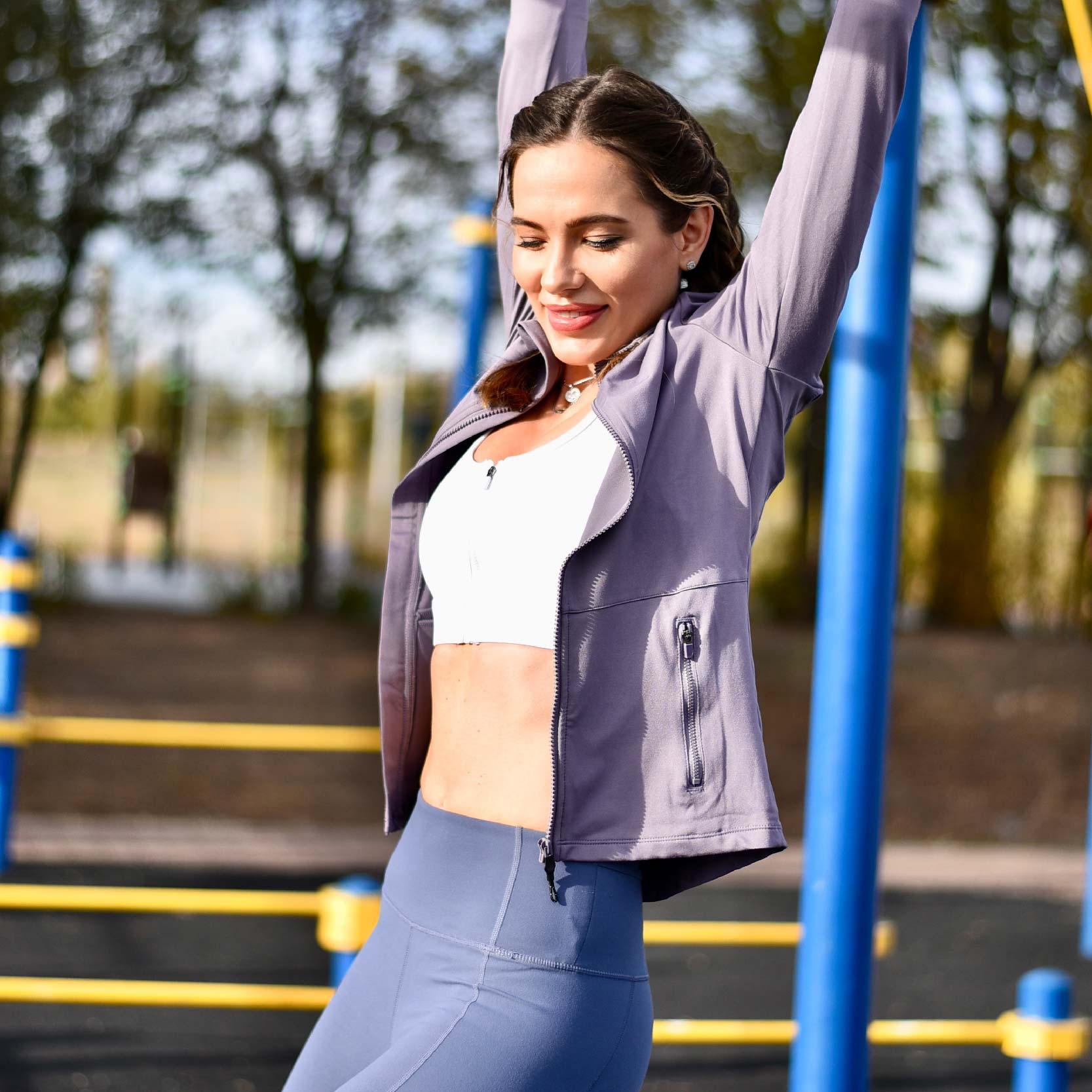15-Minute Full Body Stretch Routine For Flexibility
Full body stretch routine helps your body to avoid injuries and is a simple exercise that anyone can do. Stretching helps to strengthen your muscles and juggle your joints for smooth mobility, which relaxes your body and promotes proper blood circulation.
Regardless of your age or fitness ability, you may benefit from devoting only 15 minutes each day to stretching. This article looks at some excellent stretches to engage your entire body.
The Benefits of Stretching
Stretching your body daily can help improve your flexibility; it is also an essential aspect of fitness that can give you good balance, reduce tension and body aches, and other things.
Continue reading to discover more about the advantages of stretching and how to get started with the full body stretch routine for flexibility.
01: It Reduces Injury Risks
Muscle tightness can cause a reduction in joint movement. When this occurs, you are likely to hurt your core muscles. Daily stretching can help restore an underlying back issue.
Stretching regularly can also help avoid potential back problems by tightening your core muscles and lowering your chance of muscular damage.
02: It Enhances Athleticism
Practicing dynamic stretches can condition your muscles for physical exercise. It might also enable you to do better in a sports event or workout.
03: It Improves Blood Circulation
Stretching regularly will help your blood circulation. It increases blood circulation to the body, minimizing muscular discomfort and promoting faster recovery.
04: It Enhances Range Of Motion
If your muscles and joints are flexible, your body will have more mobility for a full range of movement. Regular stretching can significantly improve your range of motion.
Both dynamic and static stretches are good for improving range of motion, while proprioceptive muscular stimulation stretching, wherein you flex a muscle to its maximum, can be another option.
05: It Helps In Relaxation
A routine stretching exercise will help you develop mobility and relax your thoughts. Concentrate on awareness and relaxation techniques while stretching to give your brain a breather.

When Should You Stretch?
Many people recognize the value of stretching as a preparatory exercise or a post-event exercise routine, so when should you stretch?
01: Before Exercise
Full body stretch routine before workout improves blood circulation in the body and joints. Stretch for ten to fifteen minutes before practicing by moderately jogging or walking, and then stretch. Stretching before an exercise helps the muscles resist the force of the workout, lowering the chance of injury.
02: After Exercise
Stretching after intensive exercise helps to relax muscles and reduces the straining and stiffening impact of the workout. You may suffer post-workout cramps if you do not stretch your body afterward. Stretching reduces discomfort and helps to avoid muscle soreness.
03: After Sitting and Before Bed
Stretching is sometimes forgotten amongst therapeutic sleep cures, from sipping herbal tea to wafting certain fragrances. However, this simple activity may make you fall asleep sooner and sleep better.
Stretching, for example, helps you concentrate on your breath and muscles rather than the stresses of the workday.
Stretching also has physical advantages, such as relieving muscular stress and preventing sleep-disrupting headaches. Just be careful to limit yourself to moderate stretches; undertaking a heavy workout at night might have other consequences.

15-Minute Full Body Stretch Routine
Many people recognize the value of stretching as a preparatory exercise or a post-event exercise routine, so when should you stretch?
01: Calf Stretch
Calf muscles extend from the backside of the knees to midway down the outer thighs. Muscle pain and discomfort is a condition that arises from straining the muscles. Calf muscle tightness can occur as a consequence of overstimulation or inadequate stretching.
Stretching your muscles can relieve related discomfort and soreness. There are two basic methods for exercising the calf muscles; the first needs a wall, but the second does not.
♦ Using a Wall
Position yourself well, stretch your arms to the wall and get ample space. Put your right leg at the head of your left. Stretch your arms and touch the wall. Straighten your back leg while bending your front leg and placing your left heel on the ground. Maintain this posture for around 10 seconds. Do the stretching again on the opposite side.
♦ Without A Wall
Put your right leg ahead of your left leg, and then move your balance onto your right leg, with your back heel pushed into the ground. Maintain this posture for around 15 seconds. Do the stretch again on the opposing side. You should feel the stretch throughout the calves and then into the heels.

Photo source: Online
02: Leg Swings
The swinging of legs is a dynamic activity that strengthens the hips and prepares your legs for motion. Leg swings are effortless to do before a race or other sport, and they will improve your flexibility and range of motion.
To do a leg swing,
Step 1: find ample space to stand and lift one leg, or find a wall to rest your hands. Ensure you have enough room to swing either of your legs like a pendulum.
Step 2: Start gently initially, and as you get to the grove, you may increase the height and speed of your swing.
Step 3: You want to attain your maximum strength and flexibility at the hips, but don't swing so much that your spine begins to bow.

Photo source: Online
03: Hamstring Stretch
There are several strategies for stretching the hamstring core muscles of the calves, and you should choose one that is both relaxing and does not irritate the lower spine.
Below are some hamstring exercises that are simple to practice and mild for people suffering from sciatica..
♦ Hamstring Muscles Stretch While Lying Down
Usually, people suffering from lower back discomfort will gain from dynamic stretches performed while resting on their back. This is the least strenuous hamstring stretching posture.
♦ Stretching Your Hamstrings Using A Towel
Holding a towel and getting a comfortable stretching spot in mind, perform the following steps:
Step 1: With your back on the floor, wrap the towel on either thigh.
Step 2: Grip either side of the towel to hold the thigh. You may use your hands to support your thighs if you cannot locate a towel.
Step 3: Keep one leg down on the ground.
Step 4: Gently straighten your knee to feel the muscle stretching on your thigh, aiming to make the bottom of your leg parallel to the roof. Only stretch and flex the leg till the muscles are comfortable.
Step 5: Keep the posture for about 15 seconds, eventually increasing to 20 seconds. Do these stretches four to five times, changing the legs one at a time, for one set. Strive for two rounds every day. Keep the posture for about 15 seconds, eventually increasing to 20 seconds. Do these stretches four to five times, changing the legs one at a time, for one set. Strive for two rounds every day.
♦ Stretch Your Hamstrings Against The Wall.
You can perform this stretch beside a sofa or at the edge of a wall:
Step 1: Put one leg on the ground and the other against the sofa set or wall.
Step 2: Gently press the knee forward until you straighten the leg you raised.
Step 3: Maintain this posture for 10 seconds at a time, eventually increasing to 30 seconds.
Step 4: Repeat this stretching 4 to 5 times, alternating the legs, for one full set. Strive to complete two tasks.

Photo source: Online
04: Stretching Your Quadriceps While Standing
Stretching your quadriceps muscles improves mobility in the massive areas at the top of your thighs. This stretching is perfect for preparing yourself for an intensive activity; it is a routine, particularly for sports like cycling, jogging, and gymnastics. There are several methods for stretching your quads, but this is a basic variation can perform when standing anywhere.
Step 1: To keep your stability, stand near a fence or a static object.
Step 2: Using your right hand, hold your foot and bring it down to your hips.
Step 3: Straighten your right thigh by shifting your knee gently inwards and towards the ground. Don't allow your knees to flex sideways.
Step 4: Hold the stretch and repeat on the left leg.

Photo source: Online
05: Glute Stretch
Gluteal stretch is an excellent exercise for increasing movement in the thigh and hip muscles, particularly those in the buttocks. If you incorporate these exercises into your fitness program, they will provide several health advantages while also lowering your likelihood of injury.
Glute Stretching Exercises:
Long Periods Of Sitting
Step 1: Sit upright, crossing your legs with one over the other.
Step 2: Support your knee with the other hand and draw it across your upper body facing the opposite side till your buttock feels the strain.
Step 3: Stay in this position for 25 seconds.

Photo source: Online
06: Upper Back Stretch
The back and shoulder muscles are prone to getting stiff and uncomfortable, especially when you spend most of your time sitting. A series of gentle stretches can help relieve strain, prepare you for exercise, and improve your balance. Most workouts will stretch the backside. If you experience upper backaches, consult a doctor before indulging in any physical activity.
Stretching Upper Back Fundamentals
Step 1: In a curved backward stretch, extend your hands forward. Gather your hands and bring your neck to your chest. Straighten both arms out in front of you. While you're doing it, project your shoulders outward. Continue for a few more breaths before exiting the stance.
Step 2: Tilt your head downward. Focus your gaze diagonally down to your waist. Continue your stare for 15 seconds before returning to your head in a straight posture. It will relax your levator scapulae tendons located in your neck and shoulder.
Step 3: Practice lateral neck flexions to relax your top trapeziums. Take a step forward. Rotate your head such that your ear is close to the shoulder. Watch out! Your chin should not dip while doing this. Maintain your grip and try not to elevate or move your shoulder. Stay in this position for ten seconds.
Squeezing your shoulders will compress instead of stretch your muscles, but it might help relax a stiff, tense, or hurting upper back. Relax your shoulder blades pulling outword, and gently draw them back together. While your muscle fibers flex, your chest will surge upward. Return to the beginning position and squeeze your shoulders again.

Photo source: Online
07: Chest Stretch
Soreness in the chest can lead to some issues, including shoulder discomfort. When you stretch, you can avoid injuries and keep fit while having a good body balance.
Stretching Exercises for the Chest
Step 1: Pec Stretching, Shoulder Lifting, Stand tall with your shoulders back and your spine straight. Your hand on your back, lock the fingers together. Move your hands outward behind your back, palms facing up, till you feel a mild pull around your upper chest and between your shoulders.
Step 2: Keeping your posture and breathing normal, maintain the stretching for 25 seconds. You should not bend forward and stay upright.
Posture Stretch Place your feet firmly on the floor and bend your knees on a roller.
Step 3: With your hands facing upwards, stretching from the body at a 45° angle. Stretch your hands out to 90 degrees as your muscle strength improves.
Step 4: Maintain the posture for a little longer and breathe. You can hold it for 15 to 30 seconds.

Photo source: Online
08: Neck Circles
A neck circle stretches your neck muscles by relaxing and strengthening them. They can help reduce stiffness and pain around the neck muscles, and decompress the vertebrae caused by tension, leaving your muscles relaxed.
If possible, perform neck circles while standing. Though you can do them while sitting, it will limit your range of motion, but if you can move your head without contacting the seat, you can proceed.
Step 1: Begin with your head upright and your attention focused forward.
Step 2: Simultaneously, breathe deeply to relax and try to relieve neck tension.
Step 3: Standing with your legs apart and your forearms at your sides, you can experience relaxing neck muscles.

Photo source: Online
Conclusion
Regular stretching exercises may help you overcome many potential risks, and above all, stretching can also make you recover quicker and maintain better overall wellness. With this article, you can now try out ten to fifteen-minute stretches and slowly incorporate them into your daily routine.
You do not have to prepare or do anything significant before stretching, so get up and start it without any particular procedure. Best of luck in your quest to improve your health to the next level, and please continue stretching!





